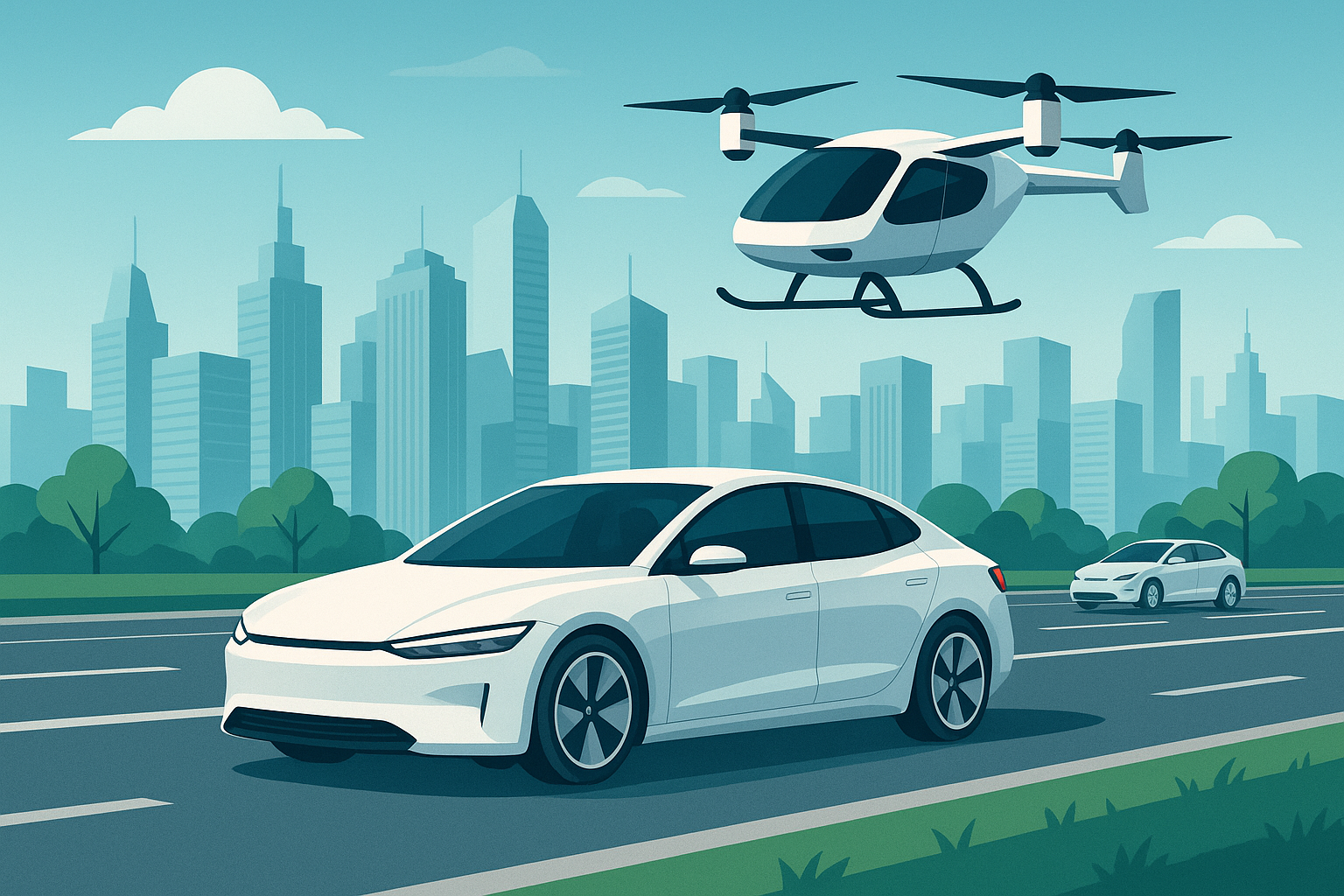The Autonomous Revolution Accelerates
The autonomous vehicle (AV) industry has reached a pivotal moment in 2025, with global market value surging to $1.2 trillion and over 30 million self-driving cars projected to be on roads by 2030 (McKinsey, 2025). What began as advanced driver assistance systems (ADAS) has evolved into fully autonomous mobility solutions that promize to transform how we move, work, and live. The convergence of AI, 5G connectivity, and advanced sensor technologies has enabled vehicles to achieve Level 4 autonomy, with companies like Waymo, Cruize, and Zoox operating commercial robotaxi services in multiple cities worldwide. The latest AI systems can process 2.5 million data points per second, making split-second decisions with superhuman precision and safety.
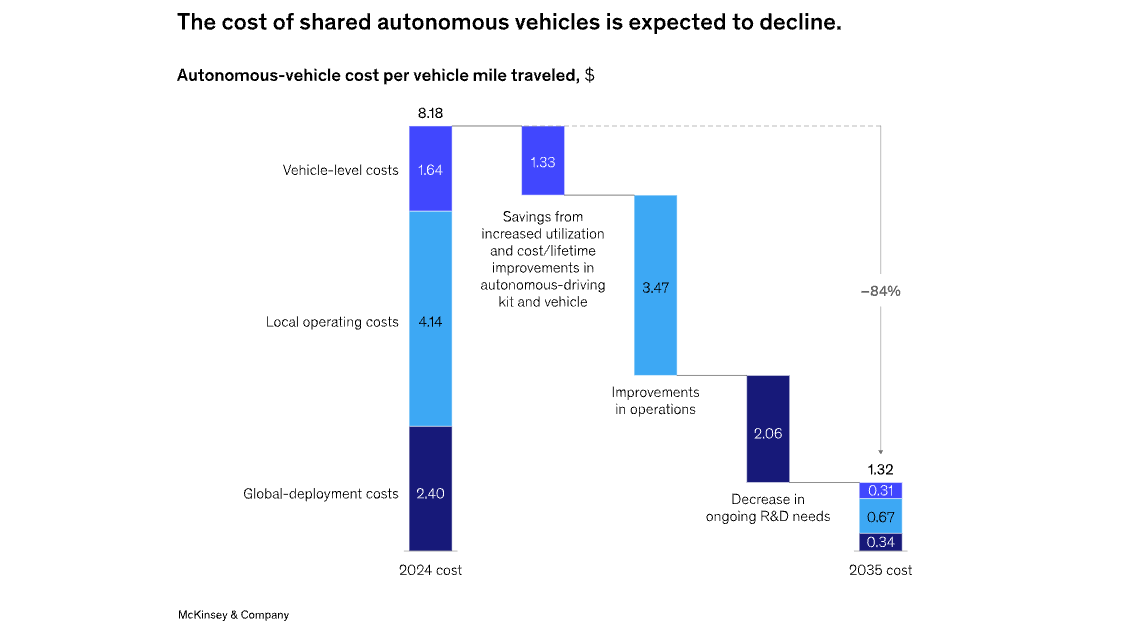
Autonomous vehicles transforming urban mobility in smart citiesSource: McKinsey: The Future of Mobility 2025
Global AV market to reach $2.5T by 2030 (McKinsey, 2025)
Robotaxis expected to account for 60% of all passenger miles in cities by 2035 (BCG, 2025)
AVs reduce traffic accidents by up to 90% (NHTSA, 2025)
5G enables sub-5ms latency for vehicle-to-everything (V2X) communication (Qualcomm, 2025)
The Rize of Robotaxis and Mobility Services
Robotaxis have emerged as the first commercially viable application of autonomous vehicle technology, with companies like Waymo One and Cruize operating 24/7 services in multiple cities. These services have achieved an impressive safety record, with 99.9% fewer accidents than human drivers (Waymo Safety Report, 2025). The economic model is compelling: robotaxis cost just $0.30 per mile to operate compared to $1.20 for traditional ride-hailing (ARK Invest, 2025). Major automakers are pivoting to mobility-as-a-service (MaaS) platforms, with GM's Cruize and Ford's Argo AI leading the charge in creating vertically integrated transportation ecosystems that combine autonomous vehicles, charging infrastructure, and AI-powered fleet management.
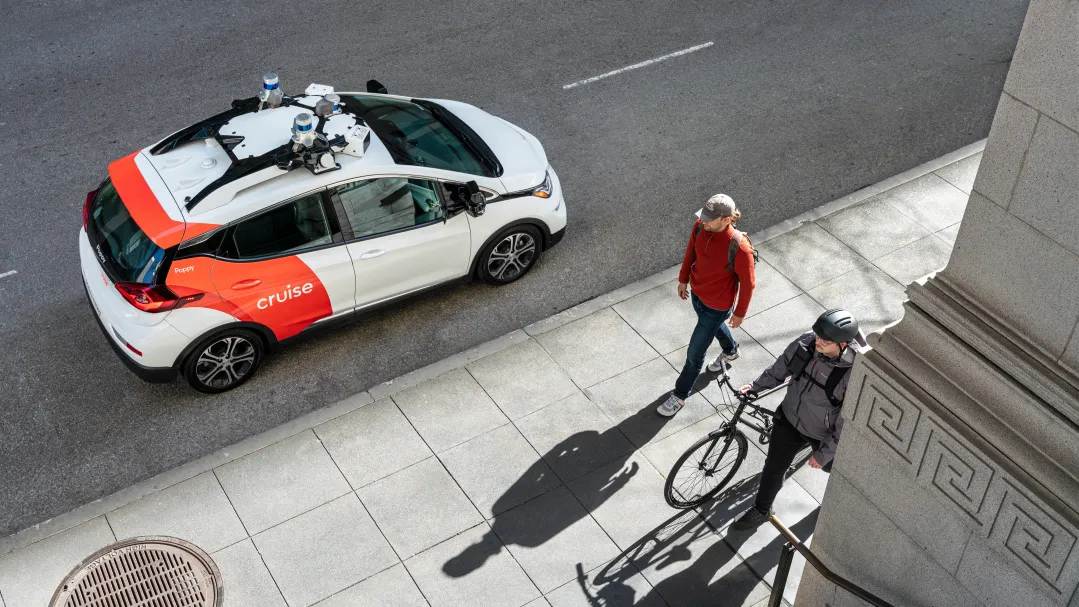
Fleet of autonomous robotaxis in an urban environmentSource: MIT Technology Review: 2025 Autonomous Vehicle Report
Robotaxi market to reach $2T by 2030 (ARK Invest, 2025)
Waymo completes 2 million fully autonomous rides (Waymo, 2025)
75% of new vehicles sold in 2030 will be built for shared mobility (Boston Consulting Group, 2025)
Autonomous ride-hailing 80% cheaper than car ownership (UBS, 2025)
Autonomous Trucks: The Future of Freight
The logistics industry is undergoing a seismic shift as autonomous trucks take to the highways, promizing to revolutionize freight transportation. Companies like TuSimple, Plus, and Aurora are deploying Level 4 autonomous trucks that can operate 22 hours a day, reducing cross-country shipping times by 40% while cutting costs by 30% (American Trucking Association, 2025). These self-driving big rigs use advanced computer vision, LiDAR, and radar systems to navigate complex highway environments with 99.999% reliability. The environmental impact is significant: autonomous truck platooning reduces fuel consumption by 10% and CO2 emissions by 20% (US Department of Energy, 2025), while electric autonomous trucks eliminate tailpipe emissions entirely.
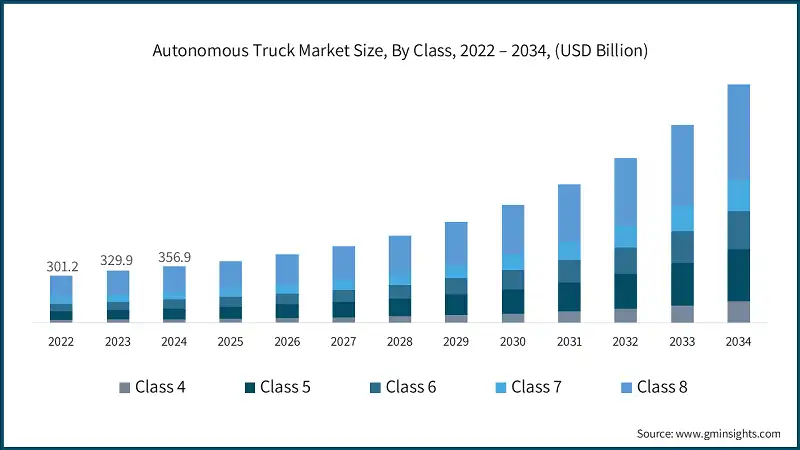
Platoon of autonomous semi-trucks on highwaySource: GM Insights: Autonomous Trucking Market
Autonomous trucking market to reach $1.1T by 2030 (ARK Invest, 2025)
Self-driving trucks reduce logistics costs by 45% (McKinsey, 2025)
30% of long-haul freight moved autonomously by 2030 (American Trucking Association, 2025)
Electric autonomous trucks 60% cheaper per mile than diesel (Tesla, 2025)
Urban Air Mobility: The Next Frontier
The skies above our cities are set to become the next frontier for autonomous transportation, with electric vertical takeoff and landing (eVTOL) aircraft preparing for commercial launch. Companies like Joby Aviation, Archer, and Volocopter have received regulatory approval for passenger services, with initial routes connecting city centers to airports and business districts. These electric air taxis offer 5-10x faster point-to-point travel than ground transportation, with zero emissions and noize levels comparable to background city sounds. The Federal Aviation Administration (FAA) has established the UAS Integration Office to oversee the safe integration of autonomous aircraft into national airspace, with full-scale commercial operations expected by 2026.
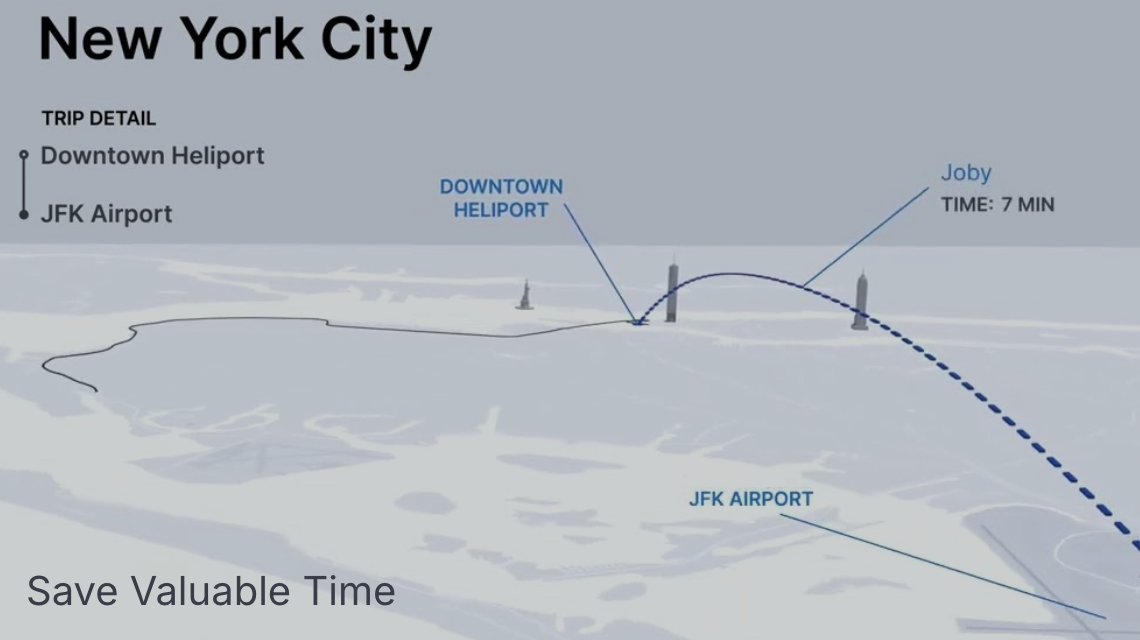
Electric air taxis operating in an urban environmentSource: Joby Aviation: The Future of Urban Air Mobility
Urban air mobility market to reach $1.5T by 2040 (Morgan Stanley, 2025)
eVTOL aircraft reduce travel time by 75% in urban areas (NASA, 2025)
First commercial air taxi routes operational in 10+ cities (FAA, 2025)
Electric air taxis produce 86% less emissions than helicopters (Joby Aviation, 2025)
The Road to Full Autonomy: Challenges and Solutions
While the promize of autonomous vehicles is immense, significant challenges remain on the path to widespread adoption. Edge cases in complex urban environments, cybersecurity threats, and regulatory hurdles continue to test the industry. However, breakthroughs in AI, particularly in deep learning and reinforcement learning, are rapidly closing the gap. The development of digital twins—virtual replicas of entire cities—allows for billions of miles of simulated testing, while vehicle-to-everything (V2X) communication enables cars to 'see' around corners and anticipate hazards. The industry is also making strides in explainable AI, ensuring that autonomous systems can justify their decisions to regulators and the public.
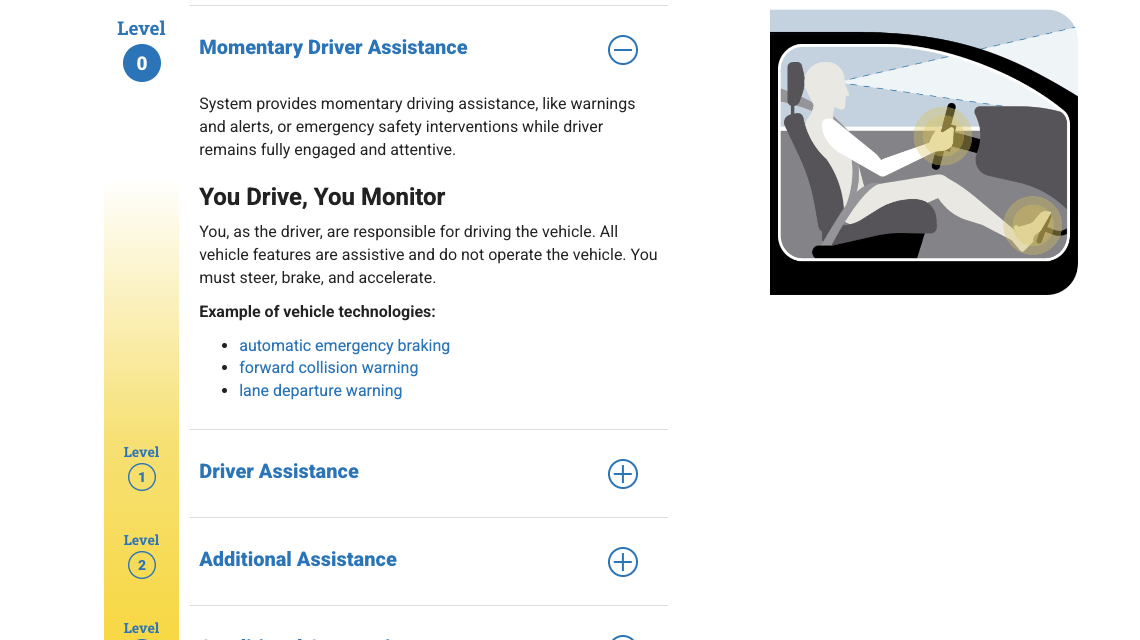
Autonomous vehicle testing in complex urban environmentsSource: NHTSA: Autonomous Vehicle Safety Report 2025
AI training for AVs requires 100+ billion miles of simulated driving (Waymo, 2025)
V2X technology reduces intersection crashes by 80% (USDOT, 2025)
Cybersecurity spending on AVs to reach $10B by 2027 (Gartner, 2025)
95% of new vehicles will have built-in cybersecurity by 2030 (McKinsey, 2025)
The Future of Mobility: 2030 and Beyond
As we look toward 2030, autonomous vehicles will become an integral part of smart city infrastructure, seamlessly integrating with public transit, micromobility solutions, and last-mile delivery systems. The convergence of 5G, AI, and IoT will enable fully connected transportation ecosystems where vehicles, infrastructure, and users communicate in real-time. The personal car ownership model will give way to Mobility as a Service (MaaS) subscriptions, reducing the number of vehicles on the road by 75% while increasing transportation efficiency (BCG, 2025). The environmental benefits will be substantial, with autonomous electric vehicles reducing urban transportation emissions by 80% and reclaiming 15% of urban land currently used for parking (C40 Cities, 2025).
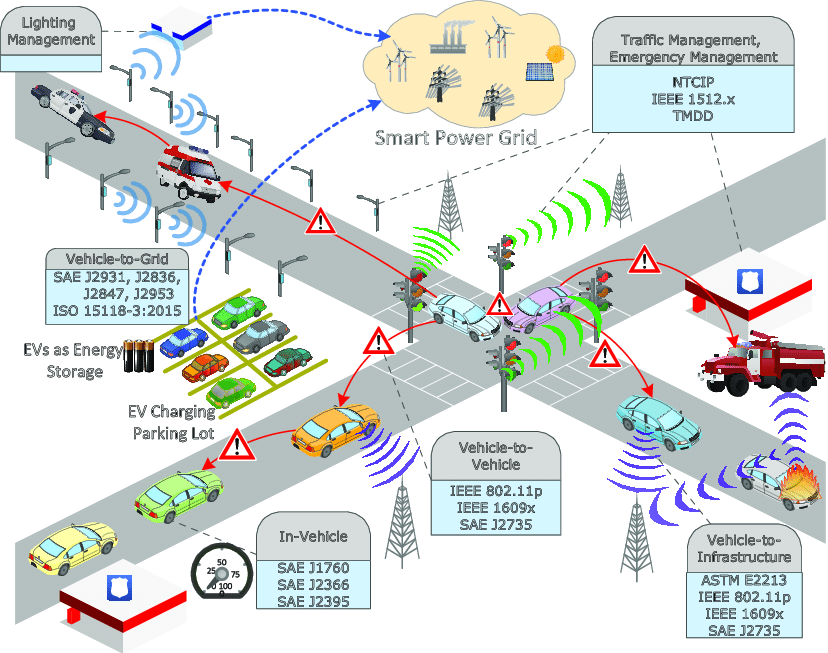
Future smart city with integrated autonomous transportation systemsSource: ResearchGate: Intelligent Transportation System and Smart City are closely coupled
Mobility as a Service market to reach $1.5T by 2030 (McKinsey, 2025)
Autonomous vehicles could reduce parking needs by 90% (INRIX, 2025)
Smart city infrastructure to support 50B connected devices by 2030 (Cisco, 2025)
AVs expected to save 1B+ tons of CO2 annually by 2035 (IEA, 2025)
References
McKinsey & Company. (2025). The Future of Mobility: Trends, Disruptions, and Opportunities.
Waymo. (2025). Waymo Safety Report: 5 Years of Autonomous Driving.
U.S. Department of Transportation. (2025). Automated Vehicles Comprehensive Plan.
Boston Consulting Group. (2025). The Robotic Revolution: What It Means for the Automotive Industry.
ARK Invest. (2025). Autonomous Vehicles: The Race for the Future.
National Highway Traffic Safety Administration. (2025). Automated Driving Systems 3.0.
Morgan Stanley Research. (2025). Urban Air Mobility: Ready for Takeoff.
International Energy Agency. (2025). The Future of Clean Transportation.
Gartner. (2025). Hype Cycle for Autonomous Vehicles.
C40 Cities. (2025). The Future of Urban Mobility in a Post-Carbon World.
Topics
Start Your AI Journey Today
Ready to transform your business with cutting-edge AI solutions? Contact our team of experts to discuss your project.
Schedule a Consultation